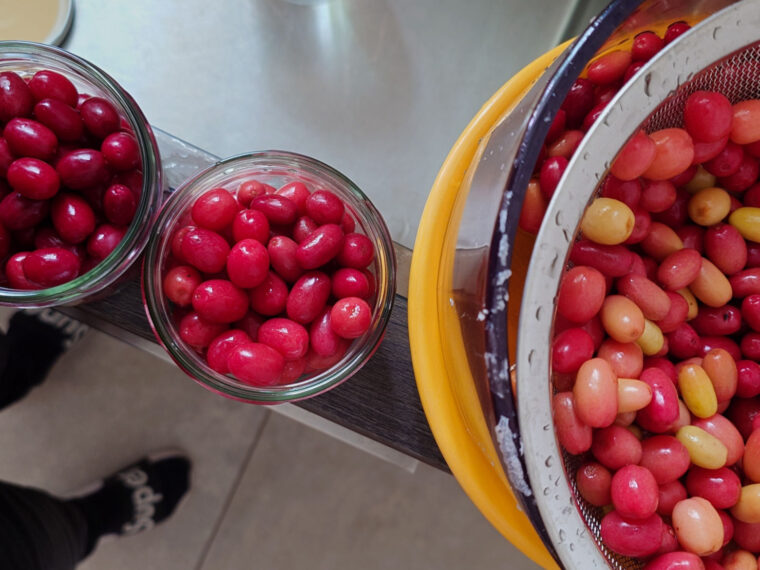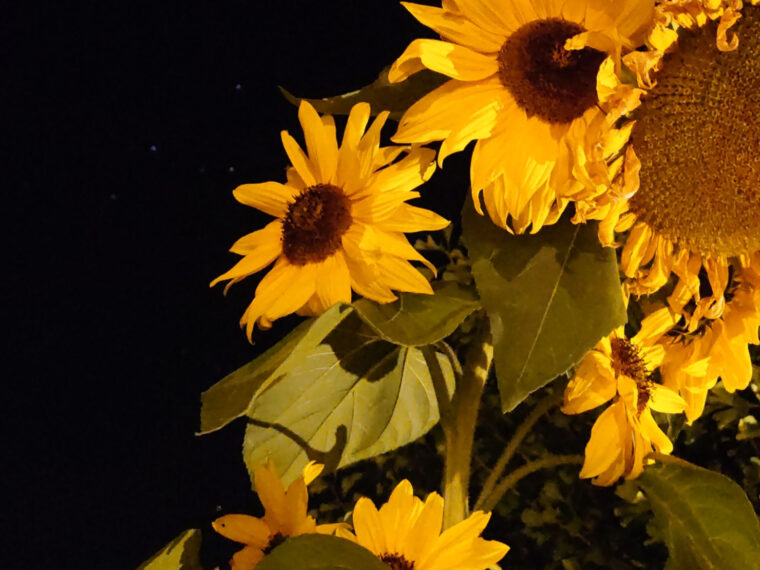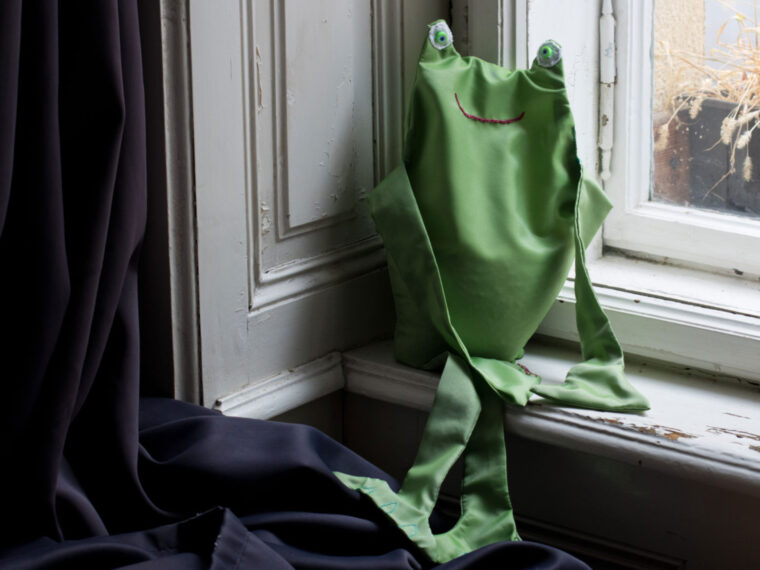In dieser Woche habe ich Ka’ak el Eid aka Mahlep-Ringerl (bald im Blog!) und Bananenküchlein mit Rumkaramell aus Ottolenghi’s „Sweet“ gebacken.
Außerdem war ich in der großartigen Fahrradwerkstatt des WUK (Wiener_innen, schauts dort vorbei!), in der eins unter fachkundiger Anleitung für nur vier Euro pro Nachmittag am eigenen Gefährt herumschrauben kann – nach Wochen Zwangspause sind meine Einradpedatwle jetzt wieder stabil. Und für einen kurzen Beitrag im Ö1-Konsumentenmagazin help war ich Anfang der Woche in Wiens ältester Messerschleiferei. „Wie Messer lange scharf bleiben“ ist noch bis Samstag nachzuhören, der Text dazu bleibt länger online.
Zwei Highlights waren aber eindeutig meine zwei ersten Restaurantbesuche nach der Corona-Gastrosperre.
ALMA Gastrothèque
In die ALMA Gastrothèque wollte ich schon sehr lange gehen, das Konzept (viele Kräuter, besonderes Brot und Naturwein) klang nämlich sehr interessant. Das kleine Lokal in der großen Neugasse stellte sich letztlich als sehr gute Wahl für den ersten Auswärts-Essen-Abend nach langer Pause heraus. Wegen besserer Wiederfindbarkeit habe ich meinen Restaurant-Bericht hierhin ausgelagert und hoffe, die Kategorie „Lokale“ hier im Blog wiederbeleben zu können.
BRUDER
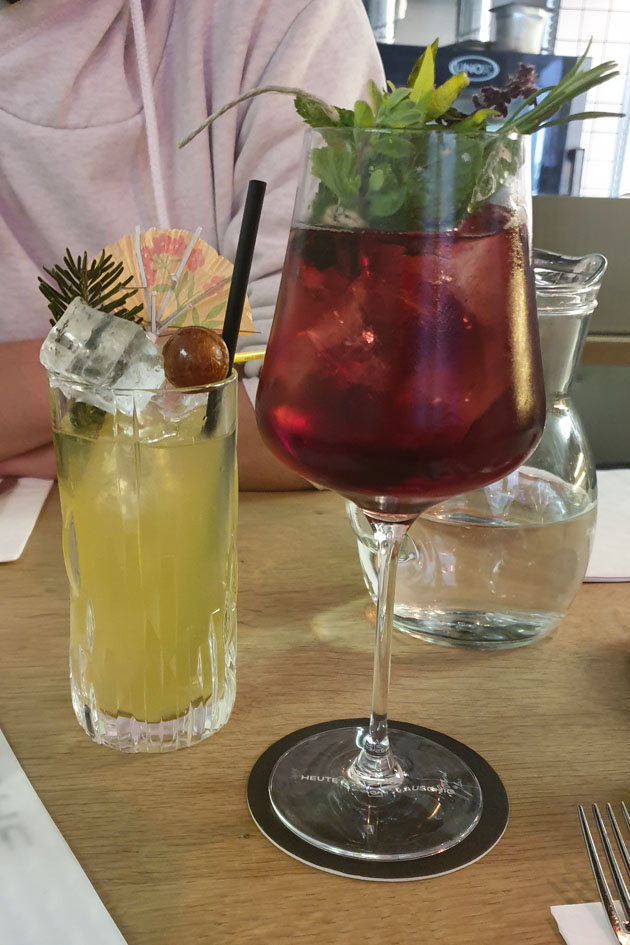
Aperitif 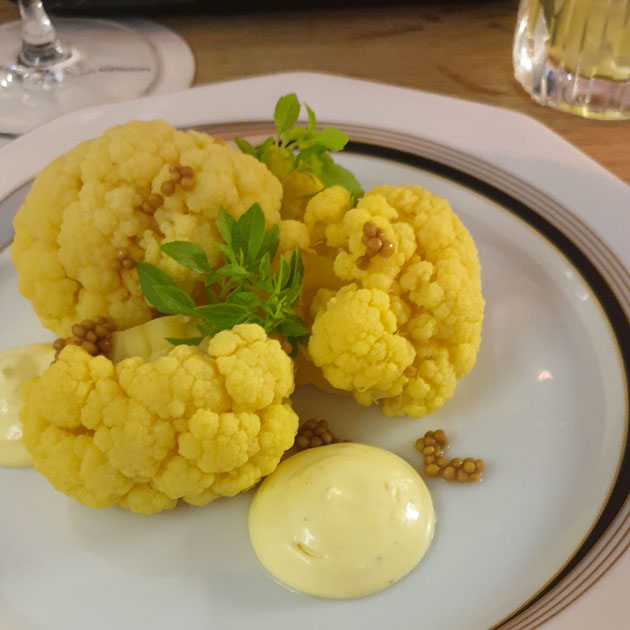
Sauer macht lustig 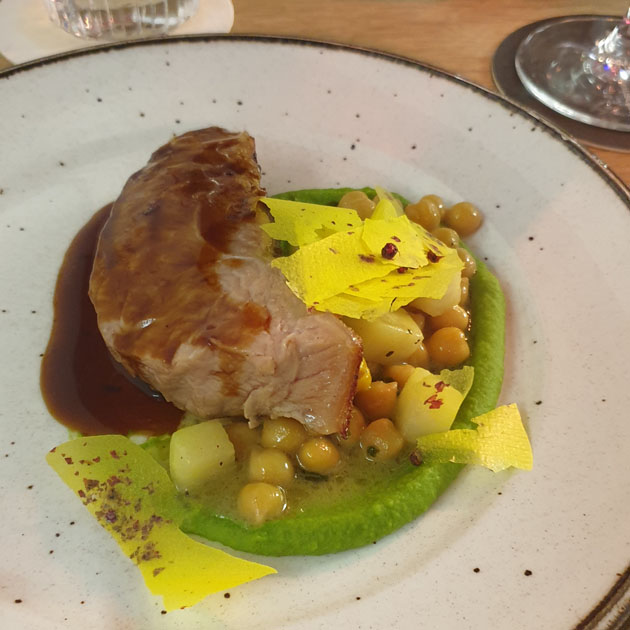
Mit Traditionen Brechen 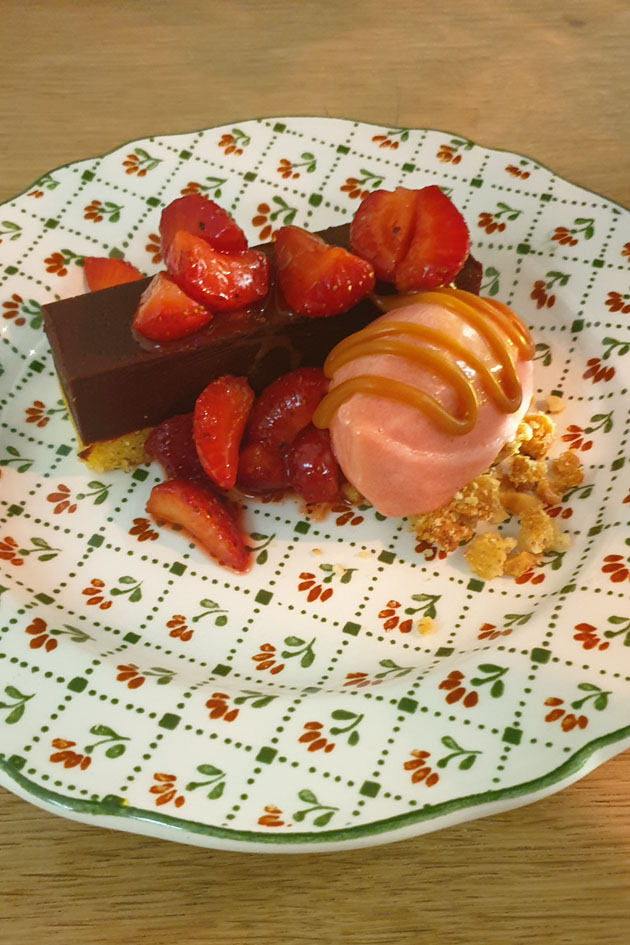
Noch einmal bitte 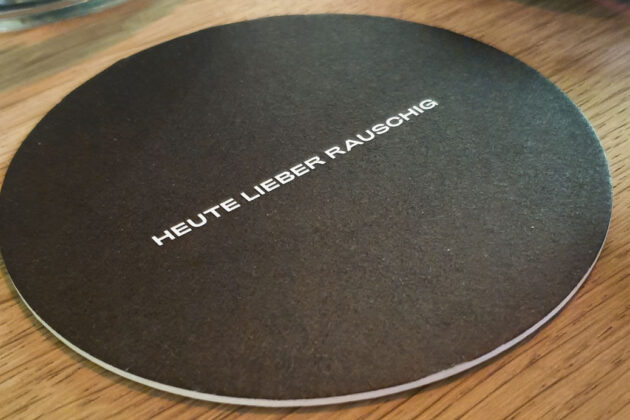
Beste Bierdeckel
Das Bruder ist mein liebstes Lokal der ganzen Stadt und ich habe hier und hier schon einmal drüber geschrieben. Ein ausführlicher Rückblick auf den Besuch am Freitag gibts ebenfalls in einem eigenen Lokal-Post.
Hier folgen meine liebsten Links der letzten Tage, wenn auch mit sehr vielen negativen Themen. black lives matter.
Rezepte
Plum caramel cake – Food52
Bis die ersten Zwetschgen reif sind, dauerts leider noch ein bisschen.
Strawberry Snacking Cake Recipe – Bon Appetit
Erinnert mich ein bisschen and den Olive Oil Plum Cake, den ich vor fünf Jahren gebacken habe.
How to make crystal clear raindrop cake – Chopstick Chronicles
Dieses japanisches Dessert habe ich auf Instagram entdeckt und wollte sofort wissen, was es ist. Turns out: Mineralwasser mit Agar Agar und Zuckersirup?
Peanut Butter-Miso Cookies Recipe – NYT Cooking
Klingt absurd, könnte aber cool sein.
Spinatsalat · Effilee
Das Dressing aus Sojasauce, Erdnussöl und Tahini klingt lecker.
Gyoza nach Roland Trettl – cookingaffair.de
Teigtascherl, selbstgemacht.
Texte
Identitäten (7/7) – Warum weiße Menschen so gerne gleich sind – Deutschlandfunk
Alice Hasters:
Die Aussage: „Ich sehe keine Hautfarben“ beweist nicht die Unfähigkeit, rassistisch zu sein, sondern die Unfähigkeit, Rassismus zu erkennen. Wer keine Hautfarben sieht, sieht auch keinen Rassismus. Wer mir sagt, er oder sie sehe keine Hautfarben, sagt eigentlich: „Ich weigere mich, deine Perspektive anzuerkennen. Ich weigere mich, anzuerkennen, dass Jahrhunderte der Kolonialisierung und Versklavung die Welt geprägt und strukturelle Ungleichheit geschaffen haben. Ich weigere mich, Verantwortung dafür zu übernehmen, diese Ungleichheit abzuschaffen.“
The Most Dangerous Place in America for Black People Is the Imagination of Our Neighbors – MEL Magazine
Zaron Burnett:
Black people know we can’t just step outside to go jogging. If we make the same choice Ahmaud Arbery did to live a healthier lifestyle, someone else might get scared and kill us. We can’t be a young woman like Renisha McBride who crashed her car and then walked up to someone’s house, knocked on the front door, looking for help from a neighbor, only to be shot to death through the screen door. We certainly can’t drive around as a lawful gun owner, like Philando Castile did, and tell an officer that we’re carrying a gun to feel safe — because we have no guarantee a cop won’t become terrified of the imaginary Black people in his mind and shoot a real one. (We can’t safely be a boy like Tamir Rice playing with a toy gun in a park either.)
George Floyd, Houston’s Protests, and Living Without the Benefit of the Doubt – New Yorker
Bryan Washington:
Not very long ago, a well-meaning white acquaintance asked me how it felt to incessantly think about living, in the United States, in the shadow of total police impunity. I answered, after blinking at him, by saying that I didn’t incessantly think about it. Nor did I not incessantly think about it. It’s just the same way that you (and you know who you are) don’t think about putting one foot in front of the other. We have to go about our lives; at the same time, there is this thing right here, which is to say everywhere in this country, that might end it at any time. We still play in the park, and we might be shot and killed for that. We still snack in our living rooms, and we might be shot and killed for that. We still read in our cars, and we might be shot and killed for that. We still blast our favorite music, and we might be shot and killed for that. We still pull into the grocery-store parking lot, and we might be shot and killed for that. We still babysit, and we might be shot and killed for that. We still ring in the New Year, and we might be shot and killed for that. We still drive home from dinner with our partners, and we might be shot and killed for that. We still go out and about only to find ourselves misidentified, owing to an administrative error in an office somewhere, and we might be shot and killed for that. We still go for walks in the neighborhood, and we might be shot and killed for that. We still take naps at home, and we might be shot and killed for that. We can be killed for any of these things—or anything else, really—with total impunity for the killers.
Envisioning an America Free From Police Violence and Control – The Intercept
Ein Interview mit Alex S. Vitale, dessen Buch ‚The End of Policing‘ gerade kostenlos als e-book downloadbar ist.
It’s very important politically for neoconservatives to define crime and disorder in moralistic terms because the alternative would be to acknowledge the role of markets and the state — that black markets are a product of a lack of economic opportunities. Instead, neoconservatives criminalize on moralistic terms so that drugs can’t be understood as a public health problem with origins that may be linked to the deindustrialization of rural America, the entrenched poverty of urban America, the pharmaceutical industry and flooding the market with cheap opioid pills. [Drug use] is framed in terms of “Just Say No” and punitive sanctions for those who don’t go along with it. So whether it’s prostitution, drug abuse, kids acting out in school, shoplifting — these are all framed in moral terms, which closes off the possibility of any kind of conversation about how to reduce the harms and the demand.
Opinion | How Western media would cover Minneapolis if it happened in another country – Washington Post
Ein fiktiver Bericht über die Ereignisse in den USA – so als würde über „Afrika“ berichtet:
In recent years, the international community has sounded the alarm on the deteriorating political and human rights situation in the United States under the regime of Donald Trump. Now, as the country marks 100,000 deaths from the coronavirus pandemic, the former British colony finds itself in a downward spiral of ethnic violence. The fatigue and paralysis of the international community are evident in its silence, America experts say.
Ich kann auch nicht atmen: Mit George Floyd stirbt auch ein Teil von mir – Volksverpetzer
Ein Gastkommentar von Jasmina Kuhnke.
„Please, I can´t breathe“ – Bitte, ich kann nicht atmen. Wenn ihr als weiße Gesellschaft weg seht, wenn BPoC euch sagen, dass ihnen die Luft ausgeht, macht ihr euch mitschuldig. Dann seid ihr Teil des rassistischen Systems, welches, mit dem Knie in den Nacken seiner Opfer gestemmt, stolz seine Dominanz präsentiert. So wie in den USA jede*r, der dieses strukturell rassistische System unterstützt, eine Mitschuld an dem Tod von George Floyd trägt.
Larry Kramer’s Historic Essay: AIDS At 30 (via Bailey E)
Vor ein paar Wochen habe ich mich in einem Uniseminar mit „Laien-Experten-Aktivist_innen“ aus der AIDS-Behandlungs-Bewegung beschäftigt. Dieser Essay hat mir die verzweifelte Lage der Gruppierung aber nochmal sehr viel näher gebracht als das ein wissenschaftliches Paper jemals könnte.
Increasingly, we are being blamed for AIDS, for this epidemic; we are being called its perpetrators, through our blood, through our „promiscuity,“ through just being the gay men so much of the rest of the world has learned to hate. We can point out until we are blue in the face that we are not the cause of AIDS but its victims, that AIDS has landed among us first, as it could have landed among them first. But other frightened populations are going to drown out these truths by playing on the worst bigoted fears of the straight world, and send the status of gays right back to the Dark Ages.
Is Email the Future of Journalism? – New Republic (via CJ Chilvers Newsletter)
Mich nervt es sehr, dass jetzt *alle* aufeinmal nur mehr (paywalled) Newsletter schreiben, anstatt alles einfach abonnierbar und vor allem besser verlink- und wiederfindbar in einem Blog zu veröffentlichen…
Substack represents an “unbundling” of news, the way that Netflix and other streaming services represent an unbundling of cable television’s hundreds of channels. Usually when you subscribe to a paper, you get some stuff you like and some stuff you don’t (you read the comics but maybe not the sports section), by some writers you like and some you don’t (I read Jamelle Bouie but not Thomas Friedman). But what if someone with 1,000 paid subscribers writing about sports in Columbus, Ohio, partners with another person with a decent following writing about the arts? Before you know it, you’ve reinvented the newspaper, sort of. “What can happen ultimately is that these things stop being isolated islands and start federating, hopefully among themselves, to create new bundles that service their communities and can be sliced and diced in different ways,” McKenzie told me. “Perhaps people can have new experiences that more deeply serve their needs, even if they live in communities that are traditionally poorly served.”
It’s disappointing to see how Substack is planning to screw itself by bundling newsletters in the style of Medium. To me, this makes Substack a place to start lots of newsletters for free, find the idea that resonates with an audience, and move the winner to a full-featured newsletter host. There’s no long-term advantage in bundling for the writer. Newsletters are about individuality and building relationship. Substack’s aim is to be a visible middleman…which is like wanting to be the guy who butts into a conversation to make an unfunny joke.
The Case for Letting the Restaurant Industry Die | The New Yorker
…um ausbeuterische Arbeitsbedingungen zu beenden. Tunde Wey im Interview mit Helen Rosner:
It’s not like I care about restaurants or workers more than a restaurant owner or a chef, but I do think they are loath to see a future other than what already exists. That’s because of their investment in the current system, which benefits them. I don’t mean to say that the benefit they accrue is so large and so bountiful that they’re consciously trying to keep workers down, though I’m sure that’s true for some corporations. What’s more true is that privilege and power become invisible when you have them. Even restaurant owners who may care about their workers ultimately care more about themselves. Workers care about themselves, too, but they don’t have the power to act on that care.
don’t bail out the restaurant industry – tunde wey
Der Newslettertext, der obigem Interview zu Grunde liegt.
An industry where labor is segregated by race and gender, underpaid and uninsured. An industry fed largely by an industrial agricultural system that either extracts profits from the environment with little consequences, or offers ethically sourced produce to just a few for a lot. Let it die. An industry where on the higher end is great food at fat prices in spaces that drive up real estate values, pushing property prices higher and poorer people further. And on the lower scale, working poor people, making barely enough to keep them going, serve low nutrition meals to other working poor people, who can’t afford quality housing because of predatory development. Let it die.
My journey into the dark, hypnotic world of a millennial guru | World news | The Guardian
Über eine online-Sekte:
By the middle of 2015, though, Parry felt the focus begin to shift. Bentinho was spending a lot of time engaging online followers and was diverting more of the company’s resources towards growing and monetizing his following. According to Parry, Trinfinity was spending up to $10,000 a month on Facebook advertising and releasing content in hierarchical tiers. Much of the online material remained free, but if a follower wanted access to “exclusive” courses, a subscription was required. A Skype chat cost $600 an hour. Retreats were held at luxury international resorts, setting followers back thousands of dollars.
The End of the Backlash to Big Tech – New Republic
Die Corona-Krise als einmalige Chance des Überwachungskapitalismus, in sämtliche Bereiche menschlichen Lebens vorzudringen.
In the place of the techlash, we have a burgeoning alliance between industry and government that has them returning to something like a post–Patriot Act, pre-Snowden mindset: a self-reinforcing, quasi-authoritarian belief in the power of surveillance and data-crunching to solve the problem at hand. Just replace the task of tracking terrorists with the mandate to track infections. Contact tracing—the practice of mapping social networks between people infected with the disease or exposed to someone who is infected—is now widely considered a key technique in fighting the spread of the virus. And though some state governments have leaned on analog tracing, it’s presumed that Silicon Valley will be involved in digital contact tracing on a mass scale.
Homes Actually Need to Be Practical Now – The Atlantic (via the purposeful object newsletter)
Über Innenarchitektur in Zeiten der Heimisolation:
Days flatten into one another, Sunday and Monday and Tuesday and Wednesday, their divisions dissolving, their hours—unstructured by commutes or classes or social gatherings—liquid. But the problem of time is also a problem of space. Homes, too, in this moment, are taking on a new kind of indeterminacy: They are now serving not only as shelter and refuge, but also as workplace and school and gym and theater and restaurant and bar and laundry and town square. They now contain, for many, an entire day’s worth of demands. But whether a house or a compact apartment, those dwellings were never meant to be as profoundly multifunctional as a shelter-in-place scenario requires them to be
Wo bleibt die Titelseite für Internet-Seiten? – dvg
Dirk von Gehlen über DIE NYT-Titel des Jahres (bisher).
We wanted to take over the entire page” erklärt Tom Bodkin, Art Director der New York Times, im Times Insider-Blog die Hintergründe für diese besondere Titelseite, die den Opfern der Corona-Pandemie gewidmet ist: „Die Zeitung hat in sechs Spalten ganzseitig die Namen von Hunderten Verstorbenen abgedruckt. In der Ausgabe stehen insgesamt 1.000 Namen aus veröffentlichten Nachrufen und jeweils ein persönlicher Satz zu den Opfern“, schreibt dpa und Willi Winkler ergänzt in der SZ: „Kein Corona-Opfer wird davon wieder lebendig, doch werden die Toten aus der nüchternen Sterbestatistik gehoben. Die Aktion, die vor einer Woche in ähnlicher Form auch die brasilianische Zeitung O Globo veranstaltet hat, ist natürlich auch ein politisches Statement gegen den amtierenden Präsidenten.“
Pressefotos von Sebastian Kurz aus dem Bundeskanzleramt – ARD Wien
Message Control durch mitreisende PR-Fotografen.
Bei den Fotos handle es sich meist um sehr gute Fotos, die zudem kostenlos über Bildagenturen angeboten werden, sagt Petra Bernhard. Ein Faktor für Redaktionen, die unter hohem ökonomischem Druck ständen. Doch Vorsicht: „Wenn jetzt ein Ausschnitt eines Ereignisses präsentiert wird – wie jetzt im Kleinwalsertal eine ältere Dame in Tracht mit der Österreichfahne, die dem Kanzler zujubelt und sich über seinen Besuch freut, dann ist das eine Perspektive auf das Ereignis, aber es ist selbstverständlich keine repräsentative Berichterstattung.“
Zwei Wochen in der Leere von Hallstatt – Urlaub in Österreich – derStandard.at
Jonas Vogt im Salzkammergut:
Es wäre verlockend, die Geschichte von Hallstatt als eine Parabel auf Overtourism, der sich selbst frisst, zu erzählen. Mit Geistern, die man rief, dann nicht mehr loswurde und die plötzlich weiter weg sind als gewünscht. Aber das wäre zu einfach. Es gab sicher auch hier Gier, Missgunst und Hybris, wie überall. Aber letztlich hat Hallstatt Pech gehabt, so wie die ganze Welt Pech gehabt hat, und das ist jetzt eben so.
Passau: Studentin startet Petition gegen Donaulied – Bayern – SZ.de
In wie vielen Bierzelten meiner Jugend habe ich dieses grausliche Lied gehört…
„Ich machte mich über die Schlafende her, Ohohoholalala, Sie hörte das rauschen der Donau nicht mehr, Ohohoholalala“ oder „Mein Mädchen, mein Mädchen, was regst du dich auf, Ohohoholalala, Für mich war es schön und für dich sicher auch, Ohohoholalala“ heißt es in dem Lied, von dem auch Ballermann-Sänger Mickie Krause eine – abgemilderte – Version aufgenommen hat. Viele Leute machten sich um den Text wohl gar keine Gedanken, sagt Studentin Corinna Schütz.
The Story of the Bikini, the World’s Smallest Swimsuit – Racked
In einem Zuckersüß von 2015 wiederentdeckt. Siehe auch: dieser Tweet.
However, unlike high-waisted ’40s two-pieces, the bikini revealed the belly button.
The navel was super shocking at the time. Even as late as 1965, censorship rules meant that a belly button could not be shown on television.
Audio/Video
Nourrir son homme : cauchemar en cuisine (1/2) – Les Couilles sur la Table
Eine Podcastfolge über Männlichkeit in der Gastronomie.
Extern promovieren – Selbstverwirklichung oder Selbstüberschätzung? – Desk Reject
Drei Phd-Studis mit Uni-Stelle reden mit einem ohne.
How Whitney Houston Broke Chart Records and Changed the Game for Black Female Crossover – Slate Hit Parade
Leider sind alle neueren Folgen dieses großartigen Podcasts hinter einer Paywall versteckt, aber das Archiv gibt auch interessantes her, z.B. über Whitney Houston (all-time fav: The Queen of Disco über Donna Summer)
Silicon Valley
Superlustige Serie, die die negativen Seiten der Techbranche in der Bay Area ausführlich ausbreitet.
Sonst So
An Antiracist Reading List – NY Times
Bekannte und unbekannte Bücher, zusammengestellt von Ibram X. Kendi.
Foto
Fensterbrettgarten.
Backkatalog:
- 2019: Rhabarber-BBQ-Sauce
- 2018: Eine Reise nach Metz
- 2017: Kernöl-Eis mit Kürbiskernkaramell
- 2016: Matcha-Ghriba
- 2015: Pavlovas mit Aprikosen und Pistazien
- 2014: Erdbeer-Rhabarber-Eis
- 2013: Champagnerwaffeln
- 2012: Marshmallows
- 2011:Oreos
- 2010: Himbeer-Schoko-Tarte

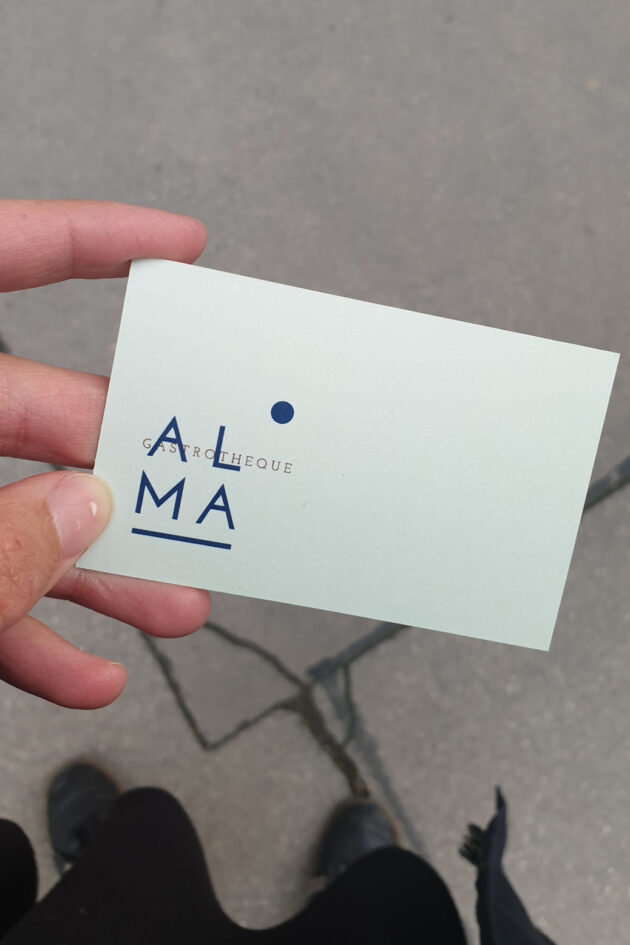
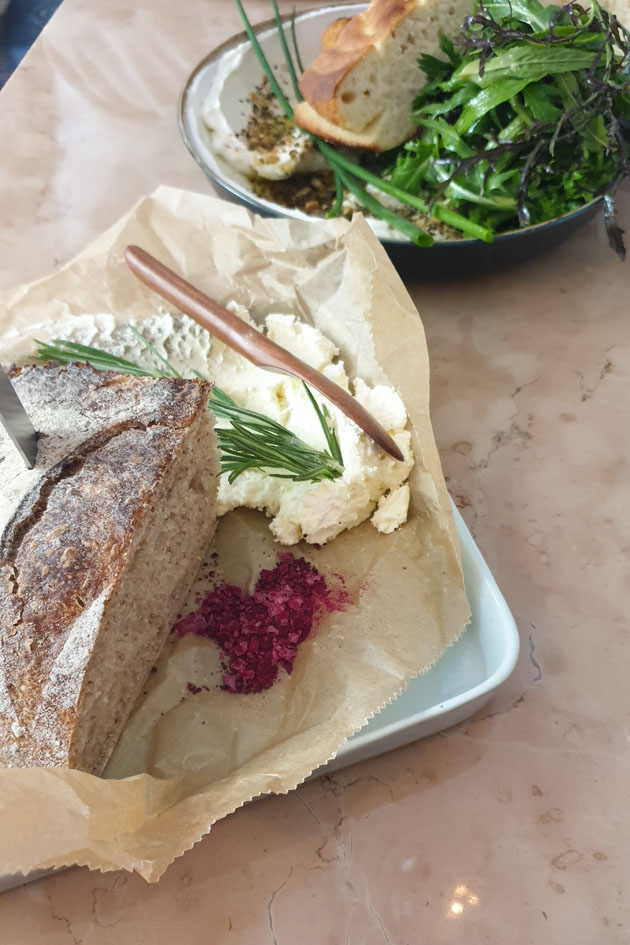
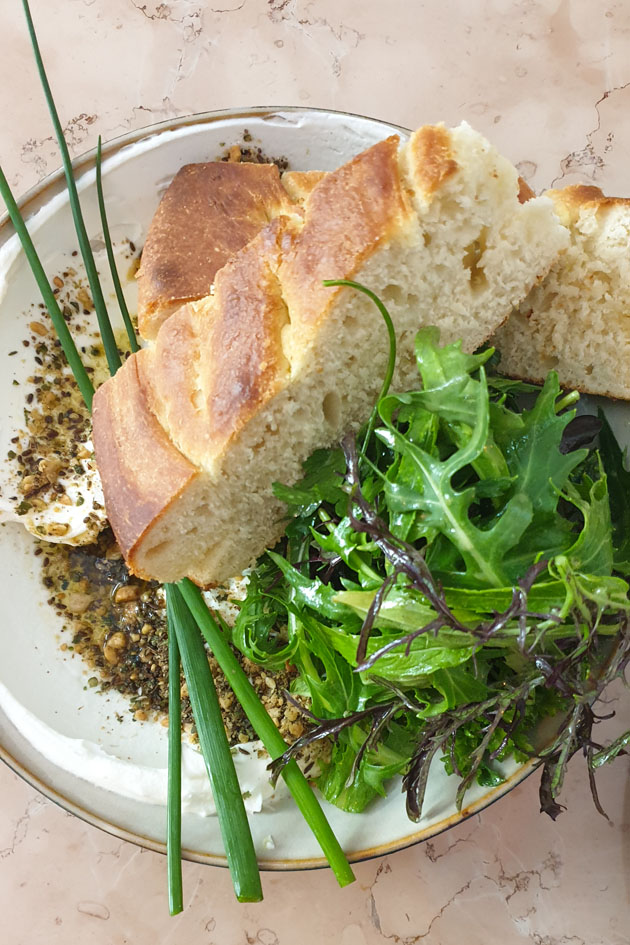
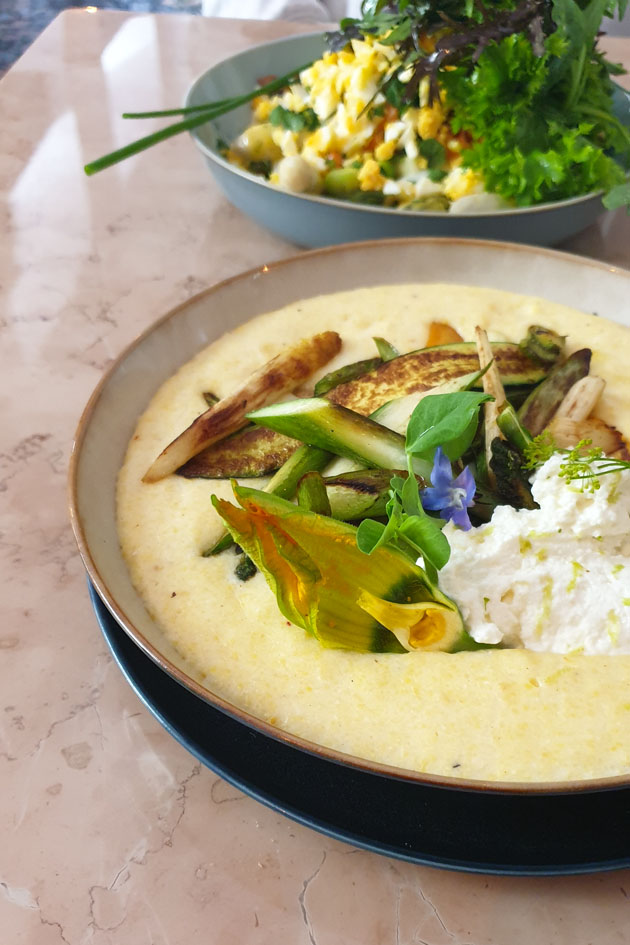
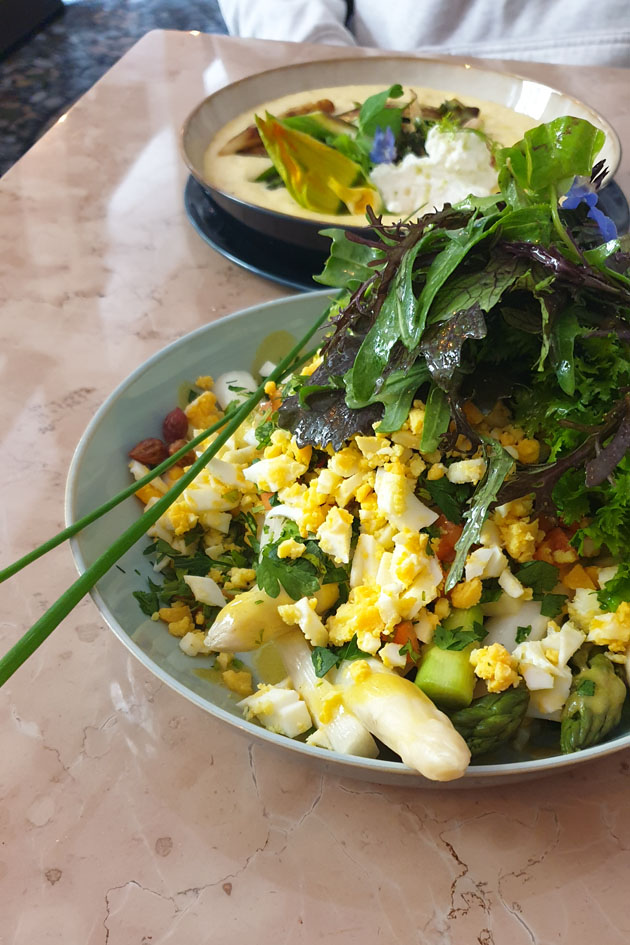
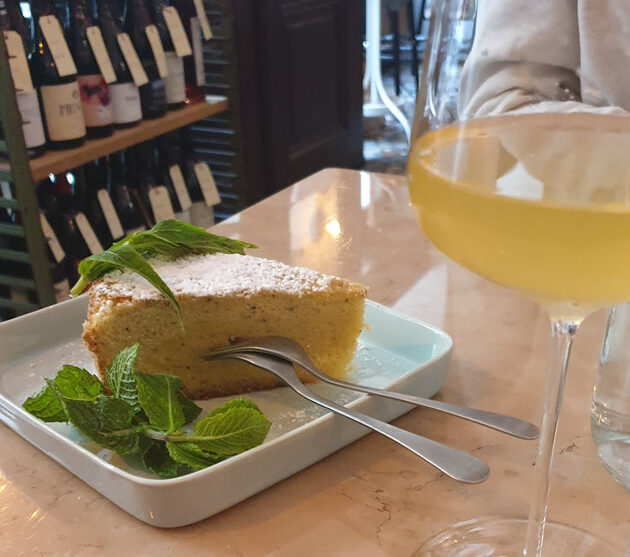
 Hi, ich bin Jana. Seit 2009 veröffentliche ich hier wöchentlich Rezepte, Reiseberichte, Restaurantempfehlungen (meistens in Wien), Linktipps und alles, was ich sonst noch spannend finde. Ich arbeite als Redakteurin bei futurezone.at, als freie Audio-/Kulinarikjournalistin und Sketchnoterin. Lies mehr über mich und die Zuckerbäckerei auf der
Hi, ich bin Jana. Seit 2009 veröffentliche ich hier wöchentlich Rezepte, Reiseberichte, Restaurantempfehlungen (meistens in Wien), Linktipps und alles, was ich sonst noch spannend finde. Ich arbeite als Redakteurin bei futurezone.at, als freie Audio-/Kulinarikjournalistin und Sketchnoterin. Lies mehr über mich und die Zuckerbäckerei auf der 

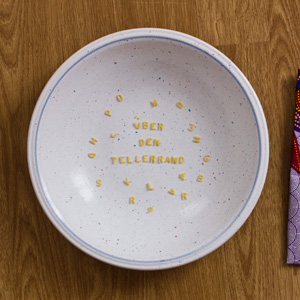 Über den Tellerrand
Über den Tellerrand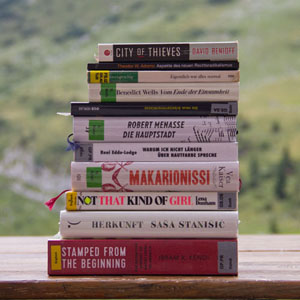 Bücher
Bücher Zuckersüß
Zuckersüß